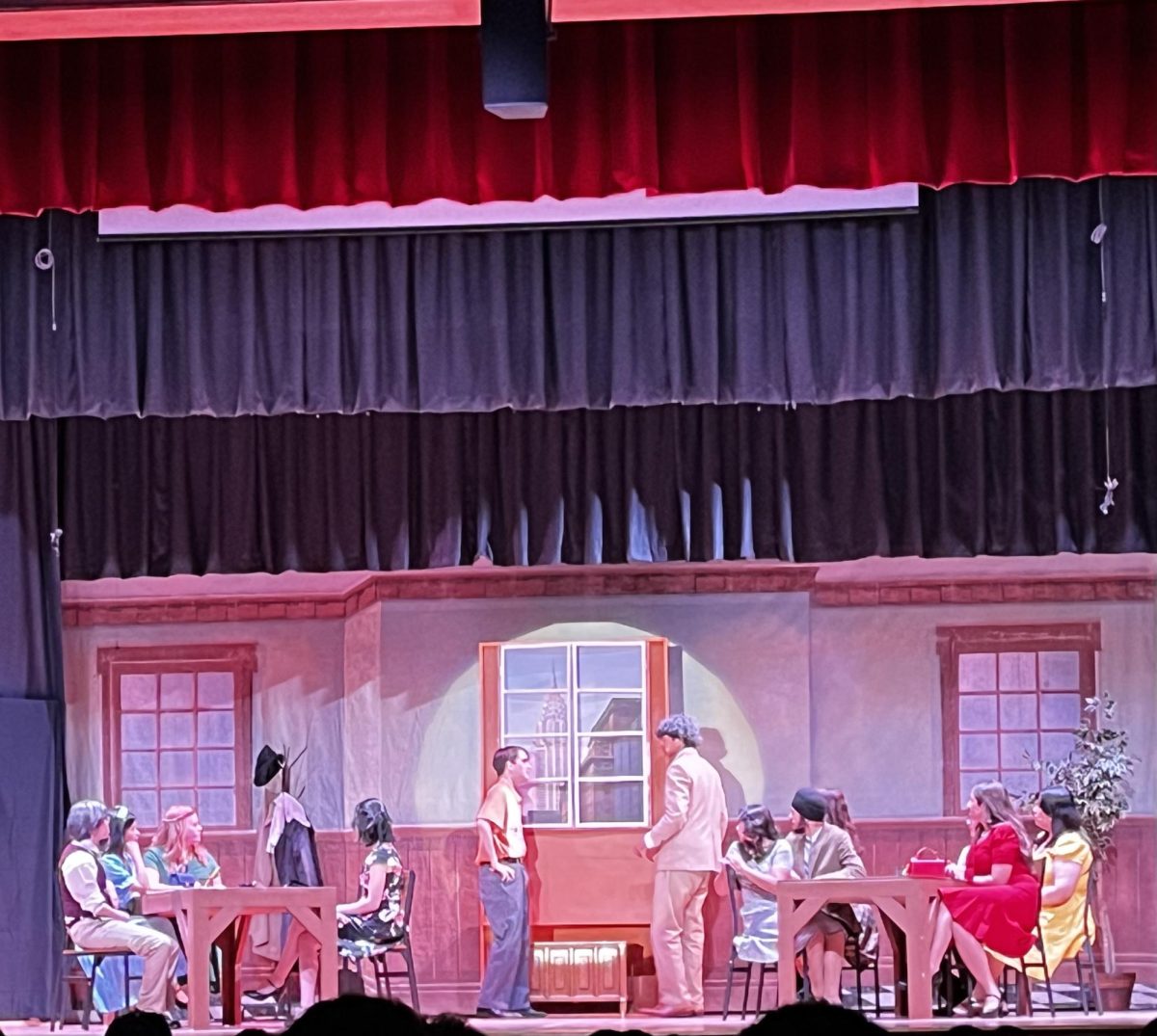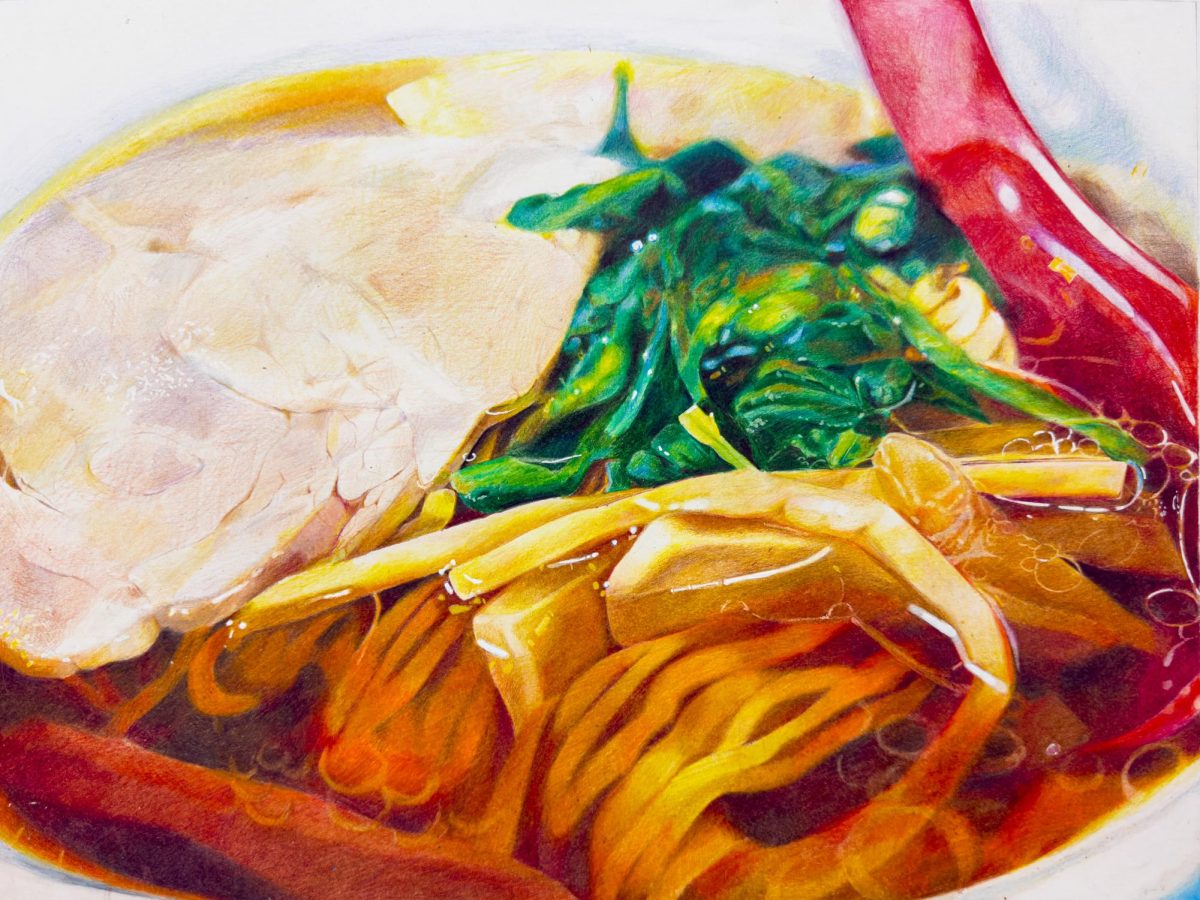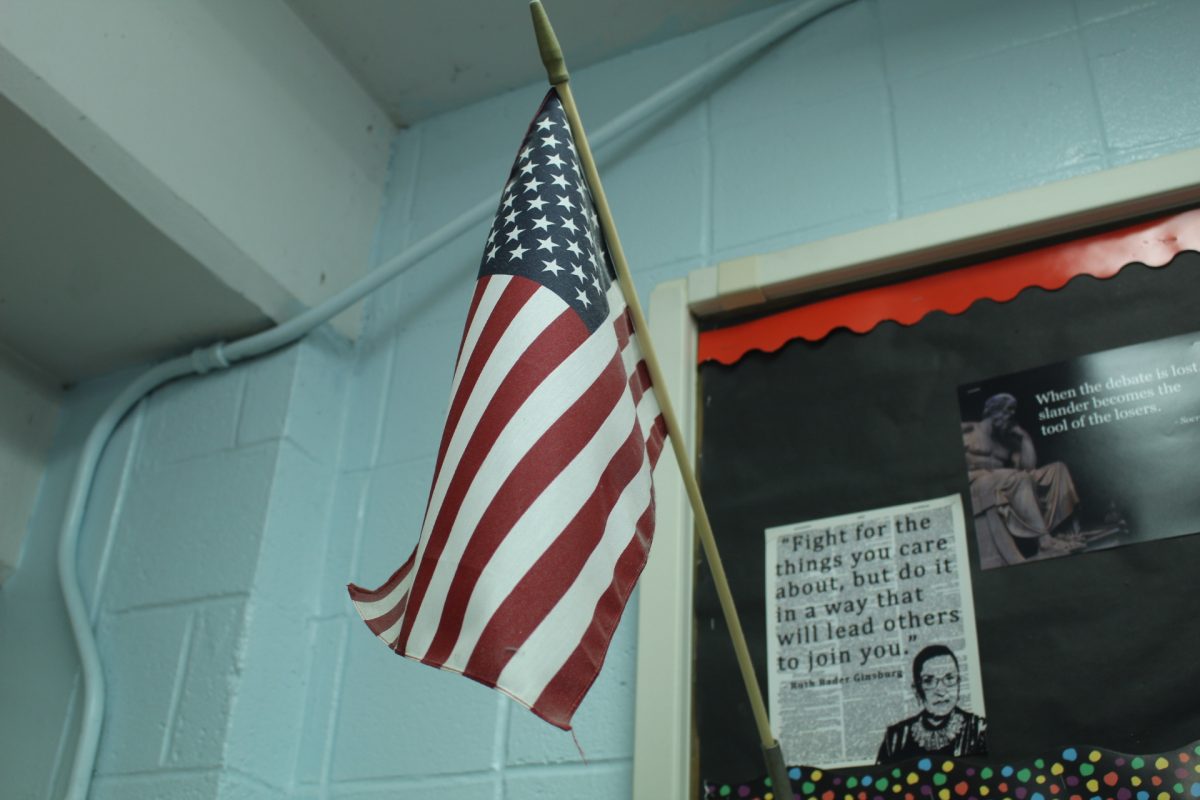Student chefs from the Culinary Academy battled it out in Francis Lewis’ very own Masterchef competition on June 12 in the Annex building. Students created restaurant concepts, built portfolios, and planned the layout of their very own restaurants as their skills were put to the test this year to compete for the title of best restaurant for their sophomore year semester final.
Students were divided into 12 individual teams and competed against one another to move up to the quarterfinals. Chef Syham and Chef Tapia oversaw the competition and determined which two restaurants would ultimately move on to the next round. As the competition progressed, the eliminated teams joined the winning team. In the finals, only two teams remained: Comida Mexicana, a restaurant featuring Mexican food, and Busan Bistro, a restaurant featuring Korean food, to compete for the title of best restaurant.
“The program itself and this term project called “Restaurant Focus” focuses on positively impacting the next generation of chefs by teaching and empowering them with the core values of the culinary arts by understanding the industry in a welcoming environment that encourages discovery, creativity, and the mastery of culinary skills,” Chef Syham said.
“This is done by giving them the tools to know both the front and back house: how to greet a diner, take plates, bust tables, ask orders, prepare food in the kitchen, make sure that there is no cross-contamination, wash their hands, wear the proper uniforms, handle food properly, buy ingredients, and know the food costs.”
The initial and main goal of this term’s project is to introduce the world of culinary arts to student chefs while challenging and testing the skills they have been accumulating throughout their two years in the program.
“I think the main thing that we try to teach is teamwork, creativity, patience, and just being in a high-paced environment, which gives them the chance to practice and succeed in that type of environment,” Chef Syham explained, who is also the teacher in charge of Comida Mexicana. “The students are also able to see what’s out there and explore the many different roles in culinary arts, whether it be nutrition, dietician, catering, or if it’d be in finance—to help manage the books—all topics we try to encourage students to learn throughout the culinary industry.”
Not only were cooking-related skills and knowledge a factor in this competition, but also extensive background research and portfolio building in order to bring their restaurant concept to life.
“They’re given a rubric and an outline where they have to follow it in order to come up with a business plan to then pitch, so they have to do all the research on designing a whole restaurant: interior, exterior, kitchens, bathrooms, chairs, and tables, as well as the demographic of the area and other restaurants like theirs based on reviews, square footage, and looking off their menu, kind of making an estimated proposal or budget for a startup,” Chef Tapia said, who is also the teacher in charge of Busan Bistro. “The research portion is important because you have to think about what your food cost is, your beverage cost is, napkins, plates, equipment costs: pans, pans, pots, soap for your dishes, cleaning supplies, gloves, cutting boards, knives, and then you have to factor in employees.”
“This makes them aware of the financial breakdown through the estimate that they have to come up with in order to do this startup restaurant, which is all a part of their proposal portfolio where they even had to generate a layout of the restaurant,” Chef Tapia added. “Actually, my class used Minecraft to build their 3D vision of the restaurant, and I liked their execution.”
The purpose of Restaurant Wars is to see how much the student chefs could accomplish with greater independence from their culinary instructors and a deadline to meet.
“This final hits the skills of organizational communication, multitasking, being safe and sanitary in the kitchen, formulating a menu, developing a price list, learning how to cost, managing to work as a team, being professional, having knowledge of the flavor and profile of food, and aspects of hospitality overall,” Chef Tapia said. “Through this project, it was nice to see the students under pressure and without the guidance of me and Chef Syham and to see them struggle because we got them to work together to put out 10 portions of food to really test their skills.”
Within each individual restaurant, the students take on essential leadership roles, including the general manager and head chef positions, in order to lead their teams cohesively and efficiently.
“The general manager will take care of all the waiters, the busters, the attendants, and the hosts while making sure the tables in the front of the house are clean, decorated nicely, the floors are clean, the music is playing, and any reservations that come in will be properly addressed,” Chef Syham said. “Whereas the chef, his responsibility is to take care of all the jobs and roles within the kitchen, whether it be their sous chefs, the people cooking the food, someone on the fryer, someone on the salad station or appetizer station, or their pastry chefs, and even the dishwashers and the people that clean up the dishes.”
However, being a leader has its own set of challenges, including discovering the most efficient way to take charge and work with others. General Manager of Comida Mexican, Ashley Zaracho, stated, “There are many different opinions on what other people want to do, and as a leader, you feel like you have to make it equal for everyone,” a difficult task to fully achieve.
“I think that my class needs to work on communicating better and taking charge because a lot of them know how to do stuff, but nobody wants to step up and be the leader,” Chef Tapia said. “That is okay because sometimes you don’t want to be bossing your classmates and friends around, but I think that next year, I’ll have to tell them not to feel bad for speaking to a person in an authoritative way and instead teach them how to communicate with each other where they’re speaking in a softer tone, but still delegating so that everyone can take up tasks given to them to make a more cohesive kitchen.”
Similarly, Head Chef of Comida Mexicana, Ryan Whitefray, agrees that a good attitude and bountiful communication make a successful leader.
“As head chef, you are showing an example, making sure that everyone knows the set expectations, and setting guidelines for quality so that they can learn with and from you,” Whitefray said. “You want to make sure you don’t come out as too rude and vice versa, or else people will not want to work for you, will not listen to instructions, and will have some kind of attitude when you’re just trying to help them learn while constantly checking up on everyone and their progress.”
Nonetheless, although each team put in their best efforts, this experience did not come without its own set of challenges and, most importantly, learning opportunities.
“I think that while I enjoyed what both classes put out, Chef Syham’s class had a little more of a leadership style,” Chef Tapia said. “They knew how to work together; whereas my class was a little bit lost, and I had to assign them a little bit of a role and say, you guys gotta do this, you gotta do that. But I think that’s a part of it—coming out of your shell and learning how to work with other people.”
Principal Dr. Marmor, who was also one of the judges during the competition, thought “the idea of creating a real environment where the kids can practice their skills was tremendously important.”
“When we first created the culinary program, it was conceived as a four-year program that would get kids ready for actual careers and build skills that they could use in the future,” Dr. Marmor said. “The culinary instructors took that to heart and basically created a pathway by which the kids could practice both the business and creative sides of the culinary world.”
This assignment, and the culinary program itself, created a realistic culinary environment whereby student chefs could develop essential skills for running a restaurant, such as time management.
“Our original signature dish, the chicken wings, we already made batches of them previously and served it before, and it went well, but during the actual competition, I feel like the time really got to us and we weren’t able to coordinate well enough to serve quality food,” Busan Bistro’s Head Chef, Alfred Lin, said. “Regarding the spicy rice cakes, they took a while to cook because we only have like one pan; we had to wait for everything to boil and then glaze it right after, which ends up being a lot of work because of how many rice cakes there are.”
When initially deciding each restaurant’s menu and cuisine concept, the students’ exposure to diverse cultural foods both inside and outside of class contributed to their final restaurant concept.
“We did Filipino food, Indian food, Mexican, Colombian, Cuban, Peruvian, a lot of South American countries, and I tried to fold cultural foods into the lesson plan,” Chef Tapia said. “And within each month, like Black History Month, Women’s History Month, Latino History Month, Asian Pacific Islander Month, we did all different things. I think we’re really trying to have the kids have a well-rounded cuisine and to differentiate between them, which is why I think Chief Syham’s class did a really good job with showcasing Mexican food and my class did a great job of choosing things that were not so popular in Korean cuisine, which I liked.”
By choosing Hispanic food as their cuisine, Comida Mexican hopes to demonstrate just “how important it is to try different types of foods.”
“We obviously like spreading more awareness of Hispanic culture and giving our restaurant a more Mexican origin through the foods we create,” Zaracho said. “I think it’s important to put Mexican cuisine out there because not many people have tried it among the wide variety of foods out there in the world.”
The students’ choice of cuisine allowed them to format their own “restaurant concepts,” during which they planned out even minor details in order to let their ideas come to life.
“Good advertisement as well as a good plan, which includes making sure we have our uniforms planned, the setting we want for the front and back of the house, and the right restaurant atmosphere, are key to success,” Whitfray said. “We realized Spanish food is something that could bring people together to create a family kind of experience with its food and culture, setting a very welcoming atmosphere where you don’t feel out of place and can just relax with friends and get together with family.”
On the other hand, Busan Bistro chose their cuisine based on different factors, including flavor profiles and first-hand experience.
“We ended up picking Korean cuisine as our restaurant focus because the flavors are just so different and a lot of its components were flavors I’d never tasted before,” Lin said. “However, since I wasn’t always familiar with the dishes, I would usually tell my team about the recipe, and then they would tell me personal experience they had with making it from previous events. For example, when we used to make sushi rolls, I wasn’t completely sure how to make them, but then a teammate who had made them before showed me how to do it, which gave me the ability to teach it to others later on.”
Throughout this process, the contrasting cultures represented allowed the student chefs to gain greater awareness of the various components of food present within each individual culture.
“By trying various foods, we learned that different cultures have different kinds of seasoning, like how Indian food might have a lot of spice and different kinds of chilies, while Spanish food has a lot of citrus, while other cultures use mostly salt and pepper, which help bring out the flavors in the dish,” Whitefray said. “We were able to learn about how different textures, tastes, and seasonings played a role in making the dish, and that helped us figure out the right amount of spices and flavors we should use in our food so it doesn’t overpower the whole main dish.”
Despite setbacks and outcomes, the culinary competition has proved to be an “exhilarating experience because it is definitely a big way to express how much we have learned in the class with management, cooking, advertising, and how to incorporate everything that we learned from class into real-life practice,” Whitefray said.
“The program is only two years old, so operating a restaurant is very complicated, and even though the kids did a great job, there is still a lot of growth and a lot of learning left on the hospitality end,” Dr. Marmor commented. “I think that it’s natural that there are definitely components of running a restaurant that they would get better at as they learn more over time.”









